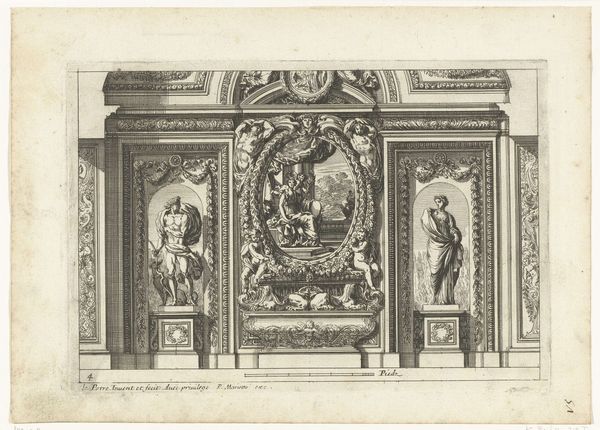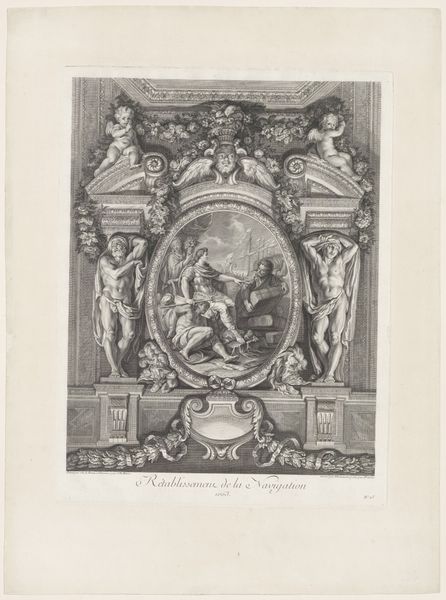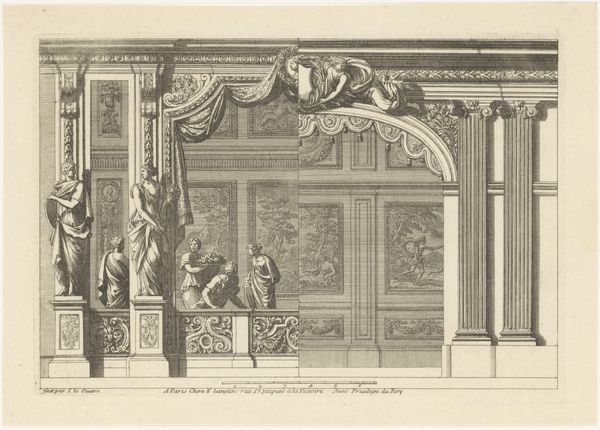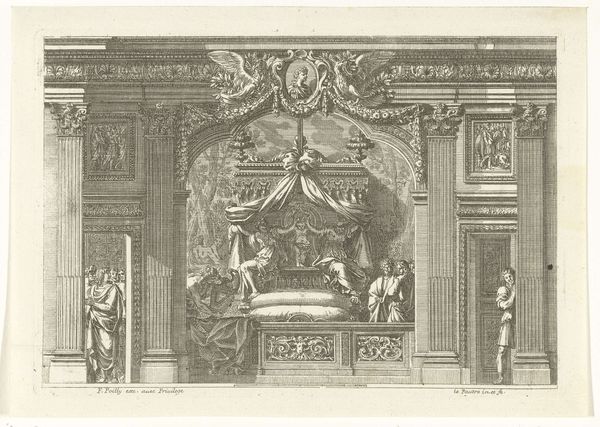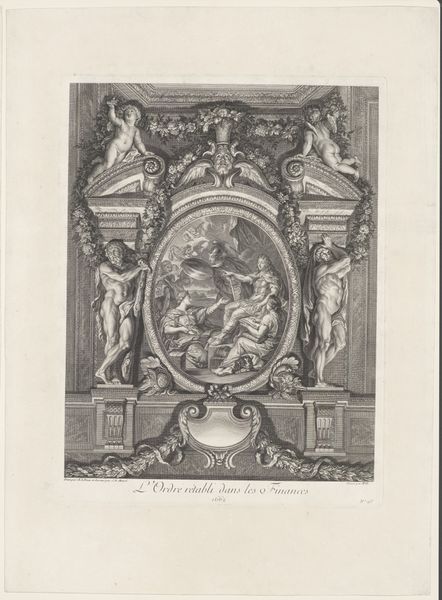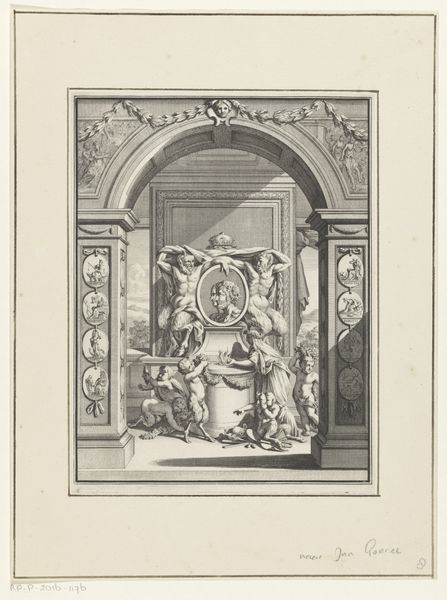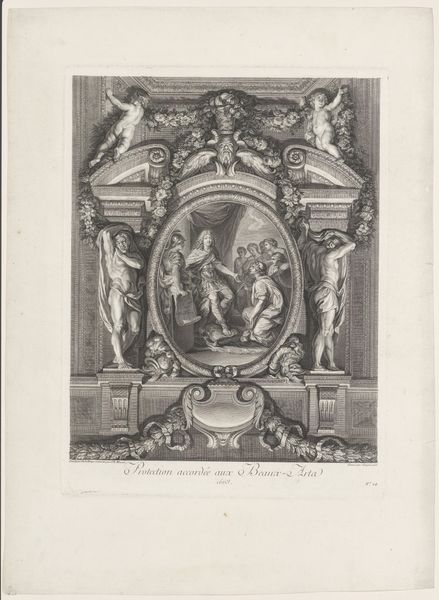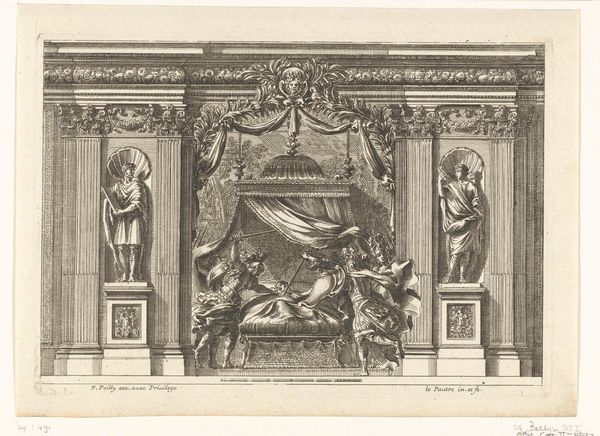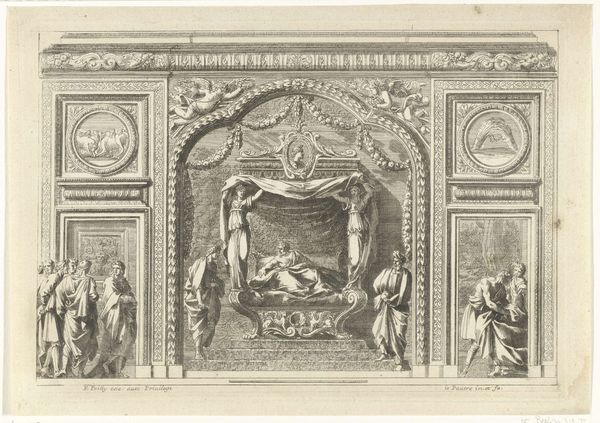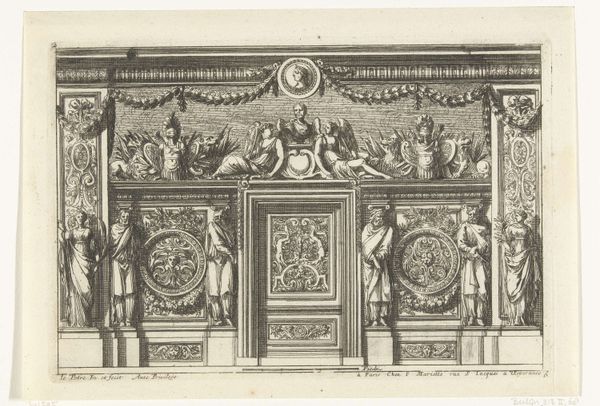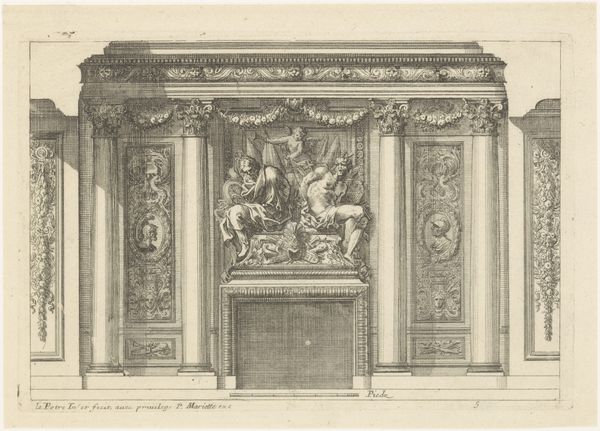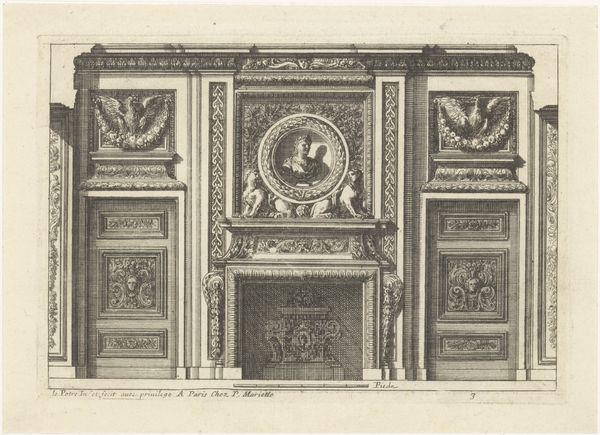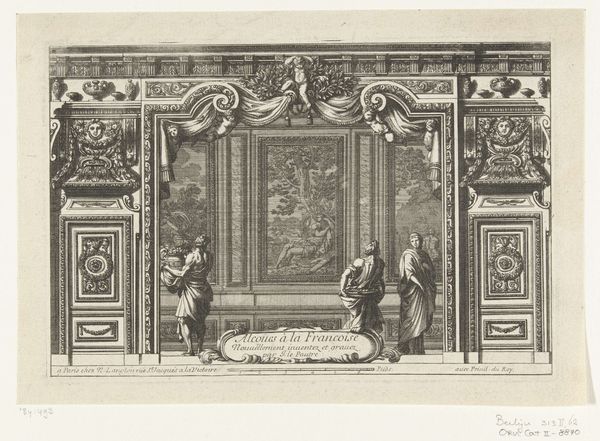
print, etching, engraving
#
allegory
#
narrative-art
#
baroque
# print
#
etching
#
figuration
#
history-painting
#
engraving
Dimensions: height 163 mm, width 215 mm
Copyright: Rijks Museum: Open Domain
Editor: This is "Jupiter Appears in a Golden Rain to Danaë," an etching and engraving by Jean Lepautre, made sometime between 1628 and 1682. The sheer detail Lepautre achieved with these materials is amazing. What do you see in this print? Curator: Well, first I consider the context of printmaking itself. It’s reproductive technology; prints democratized images, moving them from elite spaces into wider circulation. How does the material – this etching – shape our understanding of this mythological scene and its message about power and desire? The materials and process speak to a different kind of consumption than, say, a unique painting for a private patron. Editor: That's interesting, I hadn’t thought of that. How does this specific print comment on social and economic aspects? Curator: Consider the gold rain itself, meticulously rendered through the engraving process. It’s not just divine intervention; it’s wealth, a commodity, quite literally showering down upon Danaë. The act of creating numerous identical images raises questions about accessibility and the potential to circulate these themes throughout society. How did it shift the focus of baroque artistry, considering accessibility to art that would otherwise only exist in painting? Editor: So, it's about the democratization of imagery and the commodification of the subject matter itself? That's a compelling perspective. Curator: Precisely. Lepautre wasn't just illustrating a myth; he was engaging with emerging capitalist systems by mass-producing a luxurious image. And remember how printmaking demands specific labor skills, so consider the engraver's role. The materials shape how we interpret Baroque artistic messaging overall. What do you make of the scene knowing this print would be reproducible at such high quality? Editor: Now I’m considering what this imagery meant to the common person viewing it versus the patron. It opens a new dimension. Curator: Indeed, considering its materiality, we start to challenge traditional notions of “high art” and engage with the realities of art production and consumption.
Comments
No comments
Be the first to comment and join the conversation on the ultimate creative platform.

